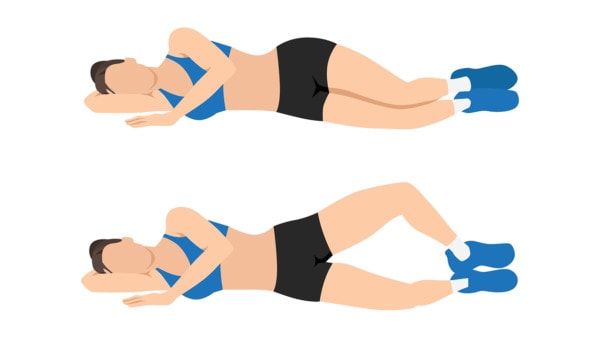Have Kneecap Pain? Exercise Your Hips!
The body is always interesting. For decades some physical therapists have treated knee pain by having their patients perform knee exercises. However, more recently physical therapists have figured out that most kneecap pain is actually coming from a hip problem. Let’s dig in.
Patellofemoral Syndrome
The kneecap lives in a groove at the end of the femur (leg bone). That’s called the trochlear groove and the medical name for the kneecap is the patella. Hence, when you get pain in this area, it’s called a patellofemoral syndrome.

Axel_Kock/Shutterstock
The Hip Bone is Connected to the Knee Bone
The knee cap has to track evenly in the groove or it can become painful and wear away the cartilage on one side or the other. Since the most common way the knee cap is shifted is toward the outside (lateral) and there is a muscle that can pull it toward the inside (the VMO or vastus medialis obliqus), for decades physical therapists would give patients exercises for that muscle. However, there’s another reason the knee cap can track toward the outside. That has to do with the leg bone itself moving inward. That moves the groove for the knee cap, which is controlled at the hip. So which is it? Do you need to exercise the knee muscles? The hip muscles? Or both?
Hip Weakness 101
The hip muscles do all sorts of things and one of them is to hold your hips externally rotated. When these muscles get weak, the body caves inward, much like we see in our modern computer and phone-centric worlds (see above). When that happens, the knee cap groove at the end of the femur moves inward. Hence, much of hip physical therapy for patellofemoral problems is working on the hip external rotators. Meaning exercises where you rotate the feet or hip outward, for example, clamshell exercises:

Lio Putra/Shutterstock
Quad Dominant
The other hip problem that happens is that the glutes and hamstrings get weak and the quadriceps (thigh) muscles take over. The butt muscles and hammies are supposed to take their fair share of the forces when you walk or run and if they’re not firing they allow the quads to take over. This then causes more force on the kneecap, since that bone lives at the end of the quadriceps muscle. For this issue, you should work on getting the glutes and hamstrings stronger with exercises like bridges:

Vips_s/Shutterstock
The New Research
This new research is a meta-analysis of 13 studies on exercises to help patellofemoral pain (1). The authors broke the studies how into hip+knee, hip-only, and knee-only exercises. They found that hip+knee and hip-only exercises worked about as well as each other to get rid of PF pain, but that knee-only exercises were inferior. This fits with what we know about how this problem develops.
The upshot? If you want to get rid of knee cap pain, the answer lies in strengthening your weak hip muscles! So make sure you get your clamshells and glute bridges in today.
_______________________________________
References:
(1) Manojlović D, Kozinc Ž, Šarabon N. Trunk, Hip and Knee Exercise Programs for Pain Relief, Functional Performance and Muscle Strength in Patellofemoral Pain: Systematic Review and Meta-Analysis. J Pain Res. 2021;14:1431-1449

NOTE: This blog post provides general information to help the reader better understand regenerative medicine, musculoskeletal health, and related subjects. All content provided in this blog, website, or any linked materials, including text, graphics, images, patient profiles, outcomes, and information, are not intended and should not be considered or used as a substitute for medical advice, diagnosis, or treatment. Please always consult with a professional and certified healthcare provider to discuss if a treatment is right for you.

